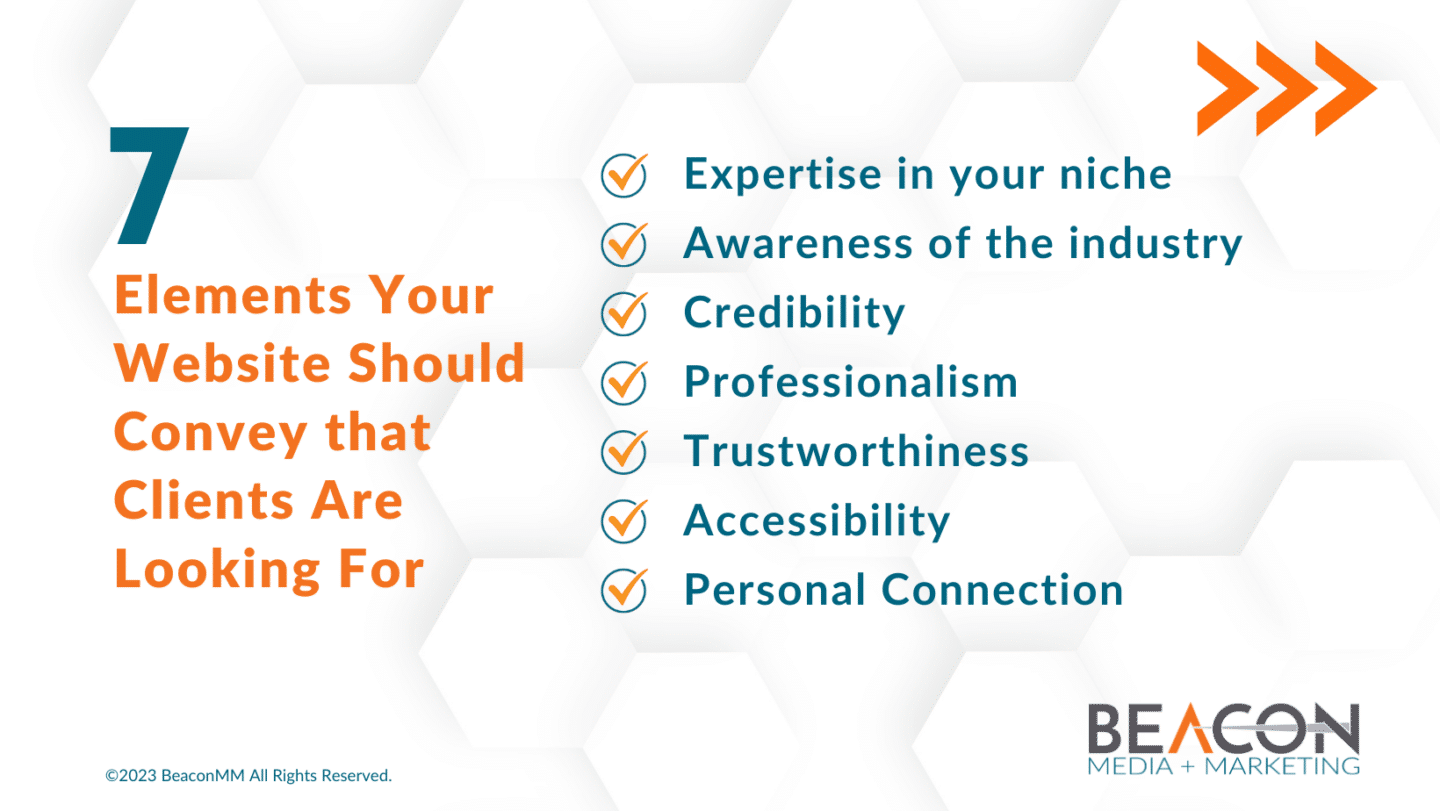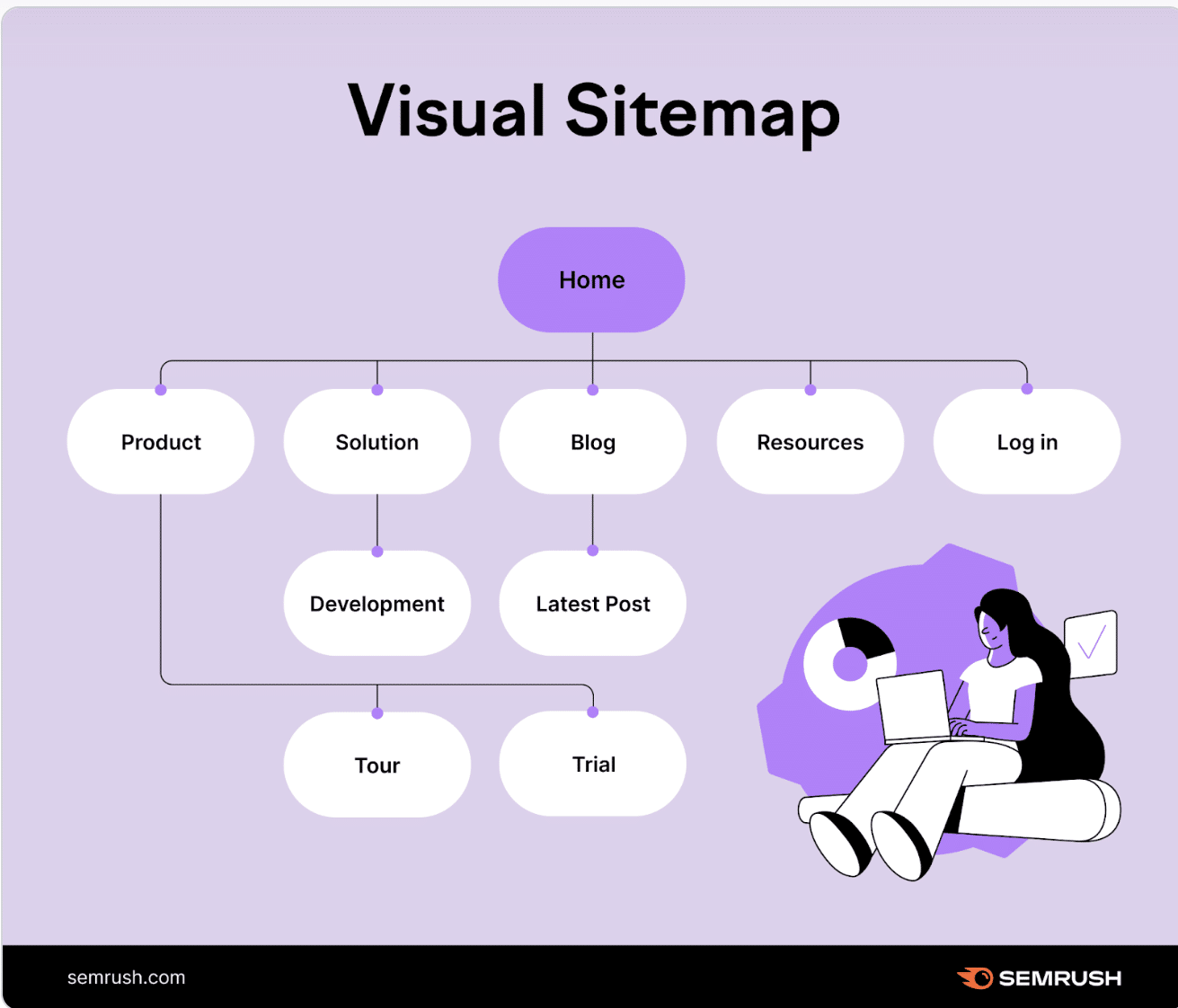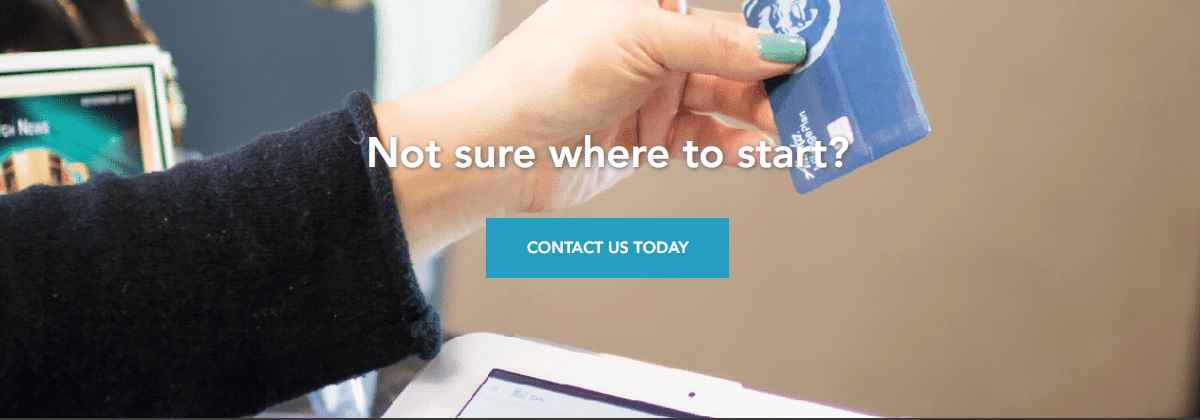In the digital age, where we’re so accustomed to information being a short click away, a well-designed website becomes a crucial gateway to generating new client growth — especially in the world of behavioral health. As such, the art of behavioral health website design goes beyond aesthetics; it involves creating a user-friendly and empathetic virtual space that fosters connection, provides valuable resources, and supports individuals on their wellness journey.
Let’s face it, it’s a reality that the majority of individuals initiate their search for a therapist through sites like Google. When exploring potential behavioral health providers, people commonly turn to a clinic’s website as their initial point of reference. Similar to other mental health websites or business platforms, the significance of having a well-designed website cannot be overstated. With this in mind, relying on listing your practice in a therapist directory is grossly insufficient for mental health marketing — especially when it comes to meeting the comprehensive needs of online visibility and user engagement.
In the following, we’ll explore the nuances of website design and highlight key elements and considerations that make behavioral health website design an art form in itself.
Need help reaching Behavioral health clients in your area? Check out our full suite of Behavioral health marketing services.
What Do Behavioral Health Clients Want?

This is a question that you must know the answer to. More importantly, you should also understand the nuanced needs of your target audience.
Your potential clients likely care about the following:
- Your expertise qualifies you to address their behavioral health concerns and mental health issues effectively.
- Your practice is characterized by mental health awareness, credibility, trustworthiness, and professionalism.
- Your clinic is both accessible and relatable to individuals seeking support.
- Establishing a personal connection is achievable, fostering a deeper level of engagement with your audience.
Your Behavioral Health website should:
- Serve as the final destination for prospective clients before scheduling an appointment with you.
- Provide a comprehensive repository of information, including details about your services, specialties, operating hours, location, testimonials, and therapist staff.
Keeping Your Behavioral Health Web Design Up To Date
At Beacon, a common inquiry we pose to our clients is, “When did you last update your behavioral health clinic’s website?”
Given the continuous evolution of web technologies, it is widely recommended to refresh your mental health website design every two to three years. If your last website redesign dates back five years or more, it is likely advisable to initiate plans for a comprehensive overhaul.
Perform a Key Features Audit
Cultivating the practice of regularly reviewing your website is an excellent habit. In addition to evaluating your site based on the items outlined in our Behavioral Health Website Design Checklist below, it’s essential to consider the following:
- Is my website aligned with current website design trends?
- Are there any changes in my behavioral health center that are not currently reflected on the site?
- Is my copywriting easily readable, addressing user questions, and free of errors?
- Should I consider hiring or parting ways with a digital marketing agency to efficiently manage this aspect of the business?
At Beacon Media + Marketing, our dedicated website design services are tailored to not only enhance the representation of your practice but also to foster significant growth for your behavioral health center. Our team is committed to creating an online presence that effectively communicates your center’s values, engages your target audience, and ultimately contributes to the expansion of your impact within the mental health community.
Engage in a Reflective Session to Define Your Behavioral Health Website Objectives
Prior to embarking on the creative journey, take a moment to reassess the goals you want your website to meet. Analyze the strengths and weaknesses of your current website design. Most importantly, define your ideal client and critically assess whether your existing website resonates with and appeals to them effectively.
What Does Your Team Think?
Believe it or not, collaborating with other mental health professionals on your team is essential when it comes to defining goals and prioritizing objectives.
For example, you can initiate the brainstorming process by engaging your behavioral health team — setting aside dedicated time to collectively review the website and aiming to gather insights from the entire team regarding what works and what doesn’t.
Conversations with team members offer a valuable advantage, as each individual brings a unique perspective to the table. For example, your front desk team may identify client scheduling issues or highlight challenges in locating new client paperwork. Therapists can contribute by pinpointing missing services, identifying broken links, or flagging outdated and irrelevant informational content.
For a comprehensive approach, you might even consider inviting a selection of patients to provide feedback on what they appreciate about your website and suggestions for improvement.
Define Your Strategies and Articulate Your Brand Message
At Beacon, as we embark on a new web design project, we guide our clients through the following inquiries:
- What are your growth aspirations, and where do you envision your Behavioral Health clinic in 5, 10, or 20 years?
- How does the goal for this website design align with your broader growth plan?
- When visitors land on your site, what specific issue or challenge are they seeking to address?
- Are there particular websites that resonate with you? If so, what aspects do you appreciate about them?
- Do you already possess a branding package, including elements like a logo, colors, fonts, and visual assets, that we can incorporate into this design?
The objective behind addressing these questions is to develop a roadmap outlining essential features and objectives for your upcoming website design. This comprehensive roadmap serves as a valuable guide, ensuring that your new website aligns seamlessly with your vision and goals.
Are you ready to make an impact with a new behavioral health website? Reach out to Beacon Media + Marketing today and schedule a free discovery call.
Define Your Website Design Structure
Following collaborative discussions with your team and the establishment of your overarching roadmap, it’s now crucial to delve into the specifics.
To effectively steer the web design process, the creation of two fundamental documents is essential: a site map and a wireframe.
What is a site map?
A site map is a visual representation, often presented as a flowchart or a bullet-point list, outlining the pages you intend to include on your website. Additionally, it indicates the placement of these pages within your navigation menu, providing a structured blueprint for your website’s architecture.
A site map for a standard five-page website can look like this:
- Home Page
- About Us
- Services
- Service A
- Service B
- Service C
- Blog
- Contact Us
You’ll notice that the example above encompasses a home page, an about us page, three primary service pages, a blog, and a contact page. Utilizing the information from the site map, you can then generate a wireframe to delineate the structure and content layout for each page on your website.

What’s a wireframe?
As per Google’s definition, a wireframe constitutes a “set of images illustrating the functional elements of a website or page, commonly employed for planning the site’s structure and functionality.”
In essence, a wireframe serves as a detailed draft sketch outlining how you intend to organize your web content, defining its functionality and visual appearance.

Navigating Your Project Through the Use of a Wireframe
To effectively steer your web project, ensure your wireframe encompasses designated spaces for:
- Headers
- Images
- Content boxes
- Buttons
- Form fields
If you are new to wireframing, a helpful approach is to practice wireframing an existing website. To facilitate this process, there are numerous online wireframing tools accessible. A few examples are Figma, Miro, and MockFlow, which provide a user-friendly experience with drag-and-drop functionality and pre-designed elements.
Craft Your Behavioral Health Content
Regardless of mental health services, you’re going to need precise, informative, and engaging content. This is the phase where you develop the content for your Behavioral Health website. In your wireframe, pinpoint all the headers and content boxes, as they serve as guides for where you intend to incorporate text on each of your web pages.
To create compelling and captivating content for your website design, consider the following processes:
Using SEO Keywords
The visibility of your new web design hinges on its ranking on Google. Consequently, an integral aspect of crafting web content is the meticulous research and optimization of SEO keywords.
For every web page, pinpoint one or two keywords that encapsulate the primary theme of that page and align with the key search terms potential clients use.
Take, for instance, our client, the Center for Grief and Trauma Therapy, which provides grief and trauma therapy services in Delaware. On their home page, we strategically targeted the keyword phrase “grief and trauma therapy.” Additionally, we incorporated the service location “Delaware” in a header to enhance their local SEO presence.
Keep in mind that one element of using keywords is including them in the title of the page and several of the headers. Ideally, your keywords will be dispersed evenly throughout the content.
Using SEO Effectively
Navigating the intricacies of SEO involves in-depth research and careful selection of optimal keywords for each page of your Behavioral Health website.
As a rule of thumb, we utilize various online tools at Beacon to identify the keywords employed by individuals in their web searches — especially when exploring specific topics relevant to our clients’ industries.
Some of these tools include:
· SEM Rush
· SpyFu
Effectively incorporating SEO keywords into your content has the potential to elevate your website’s visibility, allowing it to secure a prominent position on the first page of Google for relevant search terms in your specific geographical area. This increased visibility not only enhances your online presence but also significantly boosts the likelihood of attracting local users searching for services or information within the behavioral health niche.
Crafting Compelling Headlines
Online reading habits differ significantly, with most users engaging in quick skimming for essential information. As such, headlines play a pivotal role in providing an overview and guiding users to their desired destinations. Hence, getting headlines right is crucial for an optimal website user experience.
As a best practice, you’ll want to incorporate your keywords strategically to compose captivating headlines that not only capture attention but also succinctly convey your intended message.
In the context of Behavioral health websites, the primary objectives should include leveraging headers to connect with potential clients, eliminating barriers, and encouraging them to seek assistance.
Creating Engaging Content
Consider the type of website content that captivates your interest — likely, it’s easy to read, relatable, and genuinely helpful. In this phase, you aim to initiate a meaningful conversation with potential clients, providing them with a clear understanding of the services you offer.
Drawing on our experience at Beacon, we’ve gleaned valuable insights from developing successful behavioral health website designs.
Consider the following elements when creating your content:
- Compelling content is concise and direct, getting straight to the point.
- Engaging content employs the second person, directly addressing the reader as “you.”
- Empathetic and heart-to-heart communication characterizes engaging content.
- Recognizing the reader’s needs, engaging content provides effective solutions.
- Prioritizing essential information and ensuring easy navigation defines engaging content.
- Including a clear next step or call-to-action enhances the effectiveness of engaging content.
Highlighting Services
The primary pages on your website should offer in-depth details about your behavioral health services, emphasizing a service-oriented approach rather than an overly educational one.
For instance, visitors to your website will likely seek information on how your Behavioral health services can assist with issues like depression and anxiety. However, they are probably less interested in delving into an extensive description of the intricacies of what depression entails.
What should you incorporate in your blog?
Your behavioral health blog serves as an ideal platform to deliver valuable and educational content to your audience. On the other hand, the primary pages of your website should center on showcasing your practice, elucidating your approach to assistance, and guiding individuals on scheduling appointments.
Where should you position a call-to-action (CTA)?
Embed a call-to-action (CTA) on every page of your business website. This strategic placement assists readers in progressing towards becoming patients at your clinic. Prominently designed buttons serve as effective attention-grabbers, encouraging individuals to take the crucial step of scheduling an appointment.

Craft Your Website Design
Once you’ve assembled all the essential elements consistent with your mental health practice — your site map, wireframe, and website content — you’re well-equipped to smoothly execute your website design!
Consider the following process:
- Commence by choosing the website software that aligns with your preferences. At Beacon, we favor WordPress, widely acknowledged as a premier content management system with widespread popularity. While we utilize an advanced version of WordPress, tailored to those familiar with coding and web development nuances, there are simplified packages tailored for beginners.
- Select the package that best suits your requirements. Throughout this phase, your wireframe serves as a valuable reference for envisioning the final outcome and determining the features you wish to incorporate.
- Customize your design. Once you’ve chosen and initiated your selected package, the customization journey kicks off, involving the selection of a website theme and the incorporation of your brand details. The chosen theme essentially shapes the design of your website. Take care to meticulously compare available themes with the wireframe you’ve meticulously crafted.
- Navigate through the entire process of personalizing your chosen theme by infusing it with colors, images, and written website content.
If you encounter any challenges during this process, don’t hesitate to visit WPBeginner for comprehensive answers to your queries!
Launch Your New Behavioral Health Website!
When you’re satisfied with the visual appeal, it’s time to set your launch date.
Before hitting the final “go” button and making your site public, perform a thorough check on these crucial aspects:
- Ensure all links are functional. Visit each page, click on every link, and test their performance.
- Verify the proper functionality of your “Contact Us” form. Submit a test entry to ensure it works seamlessly, as overlooking inbound messages is crucial.
- Confirm the site’s display across popular browsers (Chrome, Firefox, and Safari) to guarantee a visually pleasing experience on the internet.
- Evaluate how it appears on mobile devices. Load your website on your smartphone and tablet (if applicable) to ensure mobile optimization and proper display.
To make your new Behavioral Health website live, log in to your hosting account and direct your domain name to its new location.
Once your new website is successfully populating at the designated address, you’re all set to go!
Enhance New Patient Growth with a Revamped Behavioral Health Website
If you’ve overlooked the maintenance of your behavioral health website, now is an opportune moment for its rejuvenation. As an increasing number of individuals turn to the internet in search of Behavioral Health services, having a professionally designed and visually appealing website is essential for making a lasting impression in the mental health field.
At Beacon Media + Marketing, we offer an impressive portfolio in the mental health industry that includes behavioral Health and mental wellness websites that not only garnered admiration from our clients but also delivered measurable results and conversions.
If your behavioral health website requires an update, at Beacon Media + Marketing we’re more than happy to assist you in achieving a fresh and captivating look for your business.
Ready to refresh your Behavioral health website design? Schedule your free consultation today!






